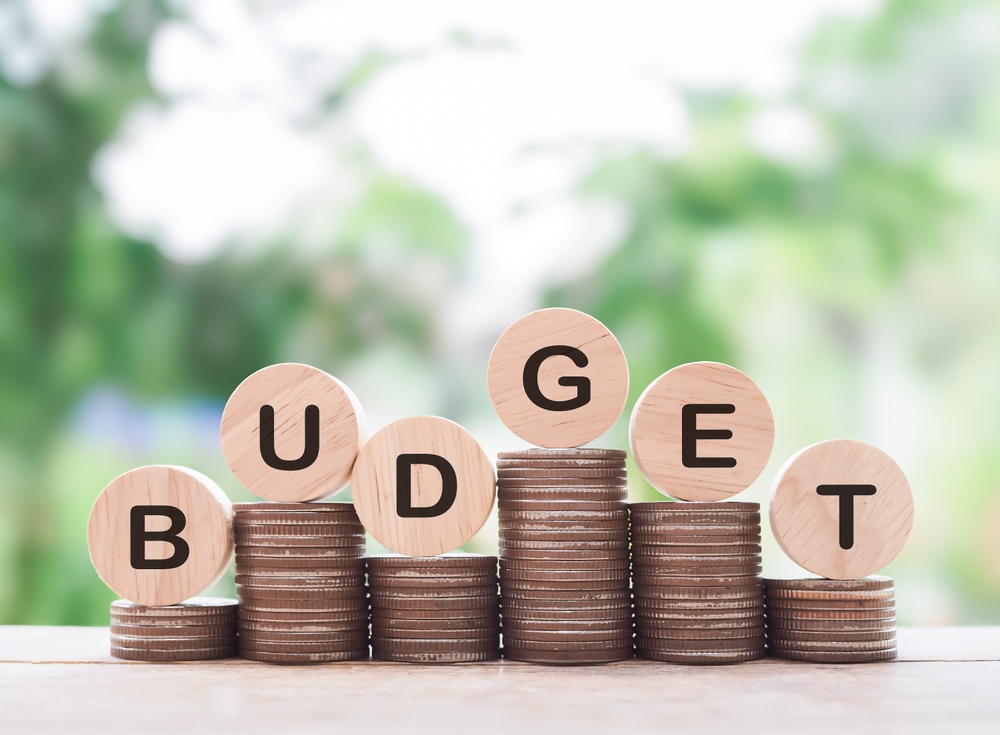Saving money can feel like an uphill battle, but adopting small daily habits can make a massive difference over time. Imagine watching your savings skyrocket simply by making a few mindful tweaks to your daily routine. Exciting, right? These 13 micro-money habits are designed to be easy to integrate into your life while delivering powerful results. Ready to transform your financial future? Let’s dive in!
1. Brew Your Own Coffee and Save Big

We’ve all heard how much coffee shops can drain our wallets, but have you ever calculated the actual savings? According to CNBC, the average American spends nearly $1,100 a year on coffee alone. Imagine how that number could transform your savings if you brewed your own coffee at home. Start by investing in a good coffee maker and select your favorite beans – not only will you save a significant amount, but you’ll also enjoy the satisfaction of crafting your perfect cup every morning.
That daily coffee stop might seem like a small indulgence, but those dollars add up quickly. By bringing your own coffee to work or while running errands, you’re not just saving money but also cultivating a habit of mindfulness about your spending. Plus, you can customize your drink to your exact taste without waiting in line. If you’re someone who enjoys the social aspect of a coffee shop, consider making a home coffee date with friends. Financial freedom starts with small, smart decisions like this.
2. Automate Your Savings for Effortless Growth

One of the easiest ways to save money is by setting up an automatic transfer from your checking to your savings account. It might sound simple, but according to NerdWallet, automation can significantly enhance your saving efforts because it takes the decision-making (and temptation to skip saving) out of the equation. Decide on a comfortable amount, and set it to transfer on payday – this way, you won’t even miss it. Over time, this practice builds a substantial safety net without you having to think twice.
The beauty of automation is that it acts like an invisible hand guiding your finances toward growth. You’ll feel a sense of accomplishment as you watch your savings account balance increase, encouraging you to continue the habit. Plus, it’s motivating to see how quickly those small amounts accumulate into a meaningful sum. If you get a raise or bonus, consider increasing your automated savings amount to boost your growth further. This habit is a cornerstone of financial success, showing that sometimes the best action you can take is to let technology do the work for you.
3. Embrace the Art of Meal Prepping

Meal prep isn’t just for fitness buffs; it’s a powerful money-saving tool for anyone looking to cut food costs. According to research from the USDA, Americans spend an average of 12.8% of their budget on food, with a significant portion going to eating out. By dedicating a few hours each week to plan and prepare meals, you can save money and eat healthier. Invest in some quality storage containers and start with simple recipes you love.
Meal prepping helps avoid the temptation of expensive and often unhealthy takeout meals. When you have delicious, homemade food ready to go, you’re less likely to splurge on last-minute dining out. This habit encourages mindful grocery shopping, as you’ll start to plan purchases based on your pre-determined meal plan. Not to mention, the time you save during the week by having meals ready is just another added bonus. It’s a small change that reaps significant rewards in your wallet and well-being.
4. Unsubscribe From Unnecessary Subscriptions

Subscriptions can be sneaky little saboteurs of your budget. How many services are you currently signed up for that you hardly use? From streaming services to monthly boxes, these small charges can add up quickly without providing much value. Take some time to audit your subscriptions and determine which ones genuinely enhance your life and which ones you can live without.
By reducing subscription fees, you’ll notice an immediate and satisfying change in your disposable income. Instead of mindlessly spending, you can redirect those funds into your savings account. Plus, you’ll be surprised at how many trials you forgot to cancel. The process might feel tedious, but it’s rewarding to regain control over your budget. Consider it a spring cleaning for your finances, helping you focus on what truly matters.
5. Pay With Cash To Build Spending Awareness

In today’s digital world, swiping a card or tapping your phone is incredibly convenient but can also make overspending easier. Using cash forces you to see and feel your money leaving your hands, which can help you become more mindful of your spending habits. Try the envelope system, where you allocate a specific amount of cash for different spending categories each month. Once the cash is gone, you can’t spend more in that category until the next month.
This tactile method of spending can be a real eye-opener, showing just how much you rely on credit or debit cards. You’ll quickly learn to prioritize your purchases and think twice before buying. The envelope system is a straightforward way to impose discipline and awareness into your financial routine. Plus, it can be quite satisfying to see the envelopes fill up with leftover cash at the end of the month.
6. Round Up Your Purchases To Boost Savings

Rounding up your purchases can be a seamless way to save without even realizing it. Many banks and apps offer this feature, where they round up your purchases to the nearest dollar and deposit the difference into your savings account. While a few cents here and there might not seem like much, it can add up to a substantial amount over time. This passive saving strategy ensures that you’re constantly putting aside a bit of money without any extra effort.
Think of it as the digital version of a piggy bank where spare change is automatically saved. This method is particularly effective for those who struggle to save intentionally. Plus, the satisfaction of watching your savings grow from such a simple action can inspire you to save even more. It’s a clever way to make every purchase work a little harder for your financial future.
7. Cut Down on Utility Bills with Smart Tech

Utility bills can be a significant drain on your monthly budget, but smart technology offers ways to cut these costs. Start by investing in smart thermostats and energy-efficient appliances – they might require an upfront cost, but the savings on your bills can quickly offset this. According to Energy Star, smart thermostats can save you around 8% on heating and cooling bills annually. This way, you save money and reduce your environmental footprint.
Simple changes like LED bulbs and smart plugs can further reduce your electricity usage. These devices optimize energy use, ensuring no unnecessary electricity is wasted. Over time, these savings can be redirected into your savings account, contributing to your financial goals. Embracing smart tech is a win-win situation, and the monthly savings will be a pleasant reminder of your wise investment.
8. Sell Unused Items and Declutter Profitably

Take a look around your home – how many items do you have that are rarely, if ever, used? Selling these unused items not only declutters your space but can also bring in some extra cash. Platforms like eBay, Facebook Marketplace, and local consignment shops are excellent places to start. You’d be surprised at how much money is hiding in your closets and garage.
This process also helps cultivate a habit of assessing your needs versus wants. Instead of holding onto things out of nostalgia or potential “someday” use, you’re actively choosing to let go and gain financially. Not to mention, a cleaner, more organized space can positively impact your mental clarity as well. Embrace minimalism and watch your savings account grow with each item you sell.
9. Set Savings Goals and Track Progress

Having a specific goal can significantly increase your motivation to save. Whether it’s a vacation, a new gadget, or a rainy-day fund, knowing what you’re saving for makes the process more tangible. Use apps or a simple spreadsheet to track your progress and celebrate small milestones. The act of saving becomes more rewarding when you’re working toward something exciting or meaningful.
Tracking progress also helps you identify patterns in your spending and saving behaviors. By regularly reviewing your achievements, you can adjust strategies and stay on target. This intentional approach fosters a habit of mindfulness and accountability in your finances. Plus, it feels fantastic to reach and surpass your savings goals, providing a sense of accomplishment and financial security.
10. Practice the 30-Day Rule for Impulse Purchases

Impulse purchases can be a significant drain on your finances, often leading to buyer’s remorse. A simple yet effective method to combat this is the 30-day rule: when you want to make an impulse buy, wait 30 days before purchasing. This pause allows you to assess whether the item is truly necessary or just a fleeting desire. Often, you’ll find that the urge dissipates over time, saving you money.
This rule encourages thoughtful spending and helps you distinguish between wants and needs. It also reduces clutter, as you’re less likely to fill your home with things you don’t genuinely want. With repeated practice, this habit can transform your spending patterns, leading to a more mindful and intentional financial lifestyle. You’ll be amazed at how much you save simply by delaying gratification.
11. Utilize Cashback and Rewards Programs

Cashback and rewards programs are excellent tools for maximizing your spending and boosting your savings. Many credit cards offer cashback on everyday purchases like groceries and gas, turning routine expenses into money-saving opportunities. Make sure to pay off the balance each month to avoid interest fees, ensuring that the rewards truly contribute to your financial goals.
By focusing on rewards programs, you’re getting more value from your spending. It’s essential to choose programs that align with your purchases to maximize benefits. Over time, these small amounts of cashback accumulate and can be funneled back into your savings account. This habit transforms your spending into a strategic advantage, making every dollar work a little harder for your future.
12. Borrow Instead Of Buying

How often do you buy items that you use only once or twice? Instead of purchasing new tools, books, or party supplies, consider borrowing from friends, family, or your local library. This approach saves money and promotes a community-oriented mindset, encouraging sharing and collaboration.
By borrowing instead of buying, you’re actively challenging the consumerist culture that equates ownership with happiness. You’ll find a sense of satisfaction in using resources wisely and maintaining a clutter-free environment. Additionally, borrowing can lead to discovering new hobbies or interests without the financial commitment. Building a habit around borrowing is as much about saving money as fostering connections with others.
13. Commit To A No-Spend Day Each Week

Designate one day each week as a no-spend day where you avoid any non-essential purchases. This practice helps reset your spending habits and encourages creativity in how you use what you already have. Cooking at home, enjoying free local events, or exploring nature are fantastic ways to spend these days.
No-spend days are an opportunity to reflect on your consumption habits and enjoy simple pleasures without financial commitment. Over time, this can lead to a more mindful approach to both spending and saving. You’ll begin to appreciate the value of money and the satisfaction of living within your means. This habit can be a powerful tool in reshaping your financial mindset and boosting your savings effortlessly.
This article is for informational purposes only and should not be construed as financial advice. Consult a financial professional before making investment or other financial decisions. The author and publisher make no warranties of any kind.








